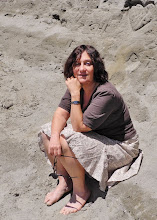 Flanagan's extensive research is a compilation of data from the largest 50 orchestras in the United States, as provided by the League of American Orchestras and Opera America. The book provides a detailed, yet highly readable examination between orchestras and arts groups in the United States (where there is little direct government support) and their foreign counterparts (where governments typically provide large subsidies).
Flanagan's extensive research is a compilation of data from the largest 50 orchestras in the United States, as provided by the League of American Orchestras and Opera America. The book provides a detailed, yet highly readable examination between orchestras and arts groups in the United States (where there is little direct government support) and their foreign counterparts (where governments typically provide large subsidies).It's been of interest to me, especially lately, to observe the various methods arts organizations and their leaders employ when coping with financial fragility and peril. In Copenhagen, Denmark, we find Keith Warner, head of Royal Theatre dropping to his knees begging for help to save his chorus. In Louisville, Kentucky, there seems to be confusion between management and players as to what actually constitutes a lock-out or a strike. Louisville Symphony musicians are being forced to repay unemployment benefits they received since June. Dallas Symphony is awash in red ink, and sadly, New York City Opera may be taking its last breath. I discovered another sobering piece on Greg Sandow's blog as he notes the ravages of cost disease and its effect on San Francisco Opera.
I've found myself wondering how the local Seattle music scene is doing currently. We have three major players: Seattle Symphony, Seattle Opera, and Pacific Northwest Ballet. One of the salient points made by Flanagan is that "limitations on the time and money of potential patrons may place performing arts organizations in direct competition with one another." I recall, even from the flush 90's, that these organizations competed against one another for every donated dollar. Local arts curators are maintaining a code of "don't tell" in terms of prognosis here, but I've heard that a lag in fund-raising, coupled with expensive buy-outs for over-valued former principals, is crippling at least one of the three; a collective bargaining agreement is in the process of being re-opened.
Flanagan hits another nail on the head with the maintenance and budgetary balance of pricier venues. For example, Seattle's Benaroya Hall (which is city-owned and opened with great fanfare in 1998 to the tune of 120 million dollars) increased expenditure—many times over—for the local orchestra. That these costs might eventually lead to financial distress should hardly come as a surprise.
Flanagan relays a basic fact that "the number of well-trained musicians seeking positions in symphony orchestras worldwide exceeds the number of positions available." Meanwhile, after a thorough investigation of performance costs and revenue, economic cycles likened to the shifts in climate versus weather changes, the comparison between American private philanthropy and European government subsidies, one recognizes the glaring truth that economic challenges faced by U.S. orchestras are not uniquely American.
"The Perilous Life of Symphony Orchestras" doesn't claim to discover that "silver bullet"—a single solution that eliminates the inherent economic challenges for today's arts organizations, perhaps because there isn't any. This book is recommended reading for anyone interested in this timely topic, but I warn you; it may keep you up at night, tossing and turning.
